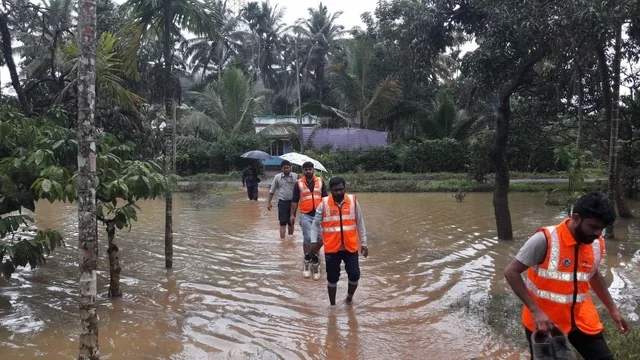Emergency Medicine Takes Shape in Laos
by Dr. Céline Jacobs, Dr. Oulaivanh Phonesavanh & Dr. Khamsay Detleuxay
Along the banks of the mighty Mekong river, which forms the border with neighbouring Thailand, lies Vientiane, the beautiful capital of Laos – officially Lao PDR. This small country recently became the latest country to launch an emergency medicine residency training program. Lao PDR is a rapidly developing country that is battling an increasing burden of the diseases of development, including traffic accidents and non-communicable diseases, while still battling many of the traditional diseases of poverty such as infectious, tropical diseases and the effects of malnutrition. As an increasing burden of development falls on the country’s health system, there was a realisation of the acute need for improved emergency medical care. As part of the desire to improve emergency medical care, the Ministry of Health and the University of Health Sciences in Vientiane, in cooperation with a small NGO, Health Frontiers, launched the Lao Emergency Medicine Residency program. The first class of 8 residents started their 3-year training in September 2017 with the second class of 9 residents starting in September 2018. This is in itself a very exciting development, but this year Lao PDR has seen some other huge strides forward made in the field of Emergency Medicine.
The first weekend of November 2018 was a very exciting two days for emergency medicine in Lao PDR. We were proud to present the First Annual Lao Conference of Emergency Medicine, which took place at Mitthaphab Hospital in Vientiane. The theme was ‘Introducing Emergency Medicine in Lao PDR’. The vision was for this to be a Lao conference by Lao emergency medicine providers introducing the specialty of emergency medicine, discussing the future scope of practice and facilitating discussion on how the Lao see the development of emergency medicine in their country.
Pictured: Key emergency medicine leaders, the 17 emergency medicine residents and Dr. Céline Jacobs, Emergency Medicine Residency Coordinator for the NGO Health Frontiers. Not pictured: Dr. Khamsay Detleuxay, EM Residency Director and Dr. Oulaivanh Phonesavanh, another key organizer of the conference.
It was a unique opportunity to bring together the key stakeholders who are already involved in emergency medicine in the country. Doctors, nurses, EMS and other EM practitioners from all 17 provinces in Lao attended. The conference gave them an opportunity to share their work, improve communication, and share ideas. It provided a stage for increased cooperation, shared learning, and sharing of resources. Finally, it facilitated connections between EM practitioners in Vientiane Capital and those in the provinces and districts.
All except two of the speakers were Lao and presented in Lao language, a very exciting achievement and great precedent for the future. This conference was also a unique opportunity to help develop presentation skills and confidence amongst some of the more junior Lao physicians and the emergency medicine residents. We did this by pairing them with a foreign expert, who had been involved in emergency medicine in Lao in some way in the past, to work together to develop their presentations.
The conference hosted two international speakers, Dr. Jim Holliman, past president of IFEM, and Dr. Paul Kivela, past president of ACEP. Dr. Holliman introduced IFEM and Dr. Kivela spoke on the Evolution and Future of Emergency Medicine. We feel it is important to link the new emergency medicine program in Lao into the global network from the beginning to ensure further strong development.
Highlights of the weekend included the presentation of several quality improvement initiatives, such as the newly designed Lao airway checklist, created and presented by the second year EM residents. Several Lao physicians, nurses and EMS providers presented on their work in different areas of emergency medicine, on the challenges and successes of this developing field. Sunday morning focused on rapid fire EM pearls, with short presentations on important clinical topics such as sepsis, tachycardias in the ER, and several pediatrics topics.
Lao is currently working on developing, improving and standardizing pre-hospital EMS care. This initiative was highlighted with several talks at the conference including an important focus on strengthening cooperation between pre-hospital and in-hospital services. One group presentation followed a road accident victim through the whole chain of care, from a senior traffic police officer talking about prevention, to EMS, ER, neurosurgery, ICU and then rehabilitation, demonstrating not only the importance of strengthening each link but the importance of strengthening the connections between each part in the chain.
Another highlight of the weekend was the interactive workshops on trauma, airway and ultrasound. For many EM practitioners from outside the capital it was their first contact with ultrasound. The focus was on the FAST exam. Thanks to the diligent work of various NGOs access to ultrasound is rapidly increasing at all levels of health care in Lao and will hopefully be an essential part of the development of emergency medicine here.
It is an exciting time for emergency medicine in Lao PDR. Hopefully, this will be the first of many EM conferences, possibly next year under the banner of the Lao Society of Emergency Medicine. As the EM residency program graduates its first class in 2020, we expect great things to continue for emergency medicine in Lao PDR.








